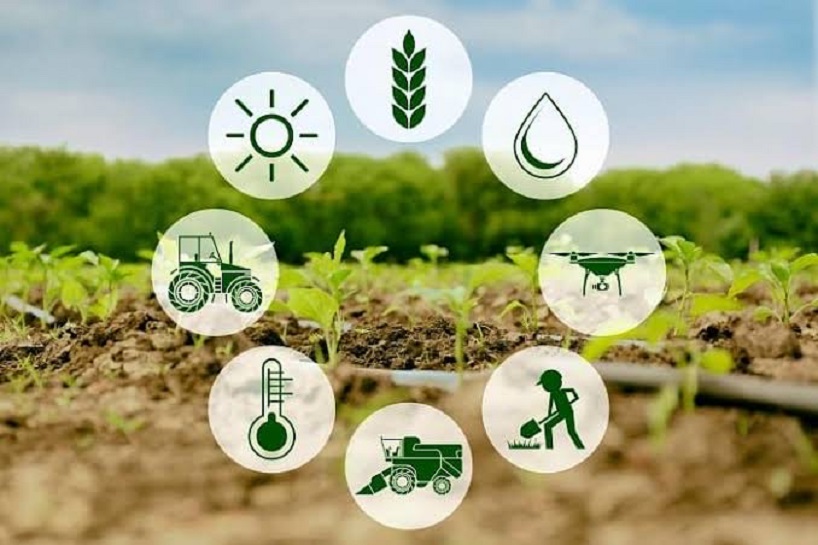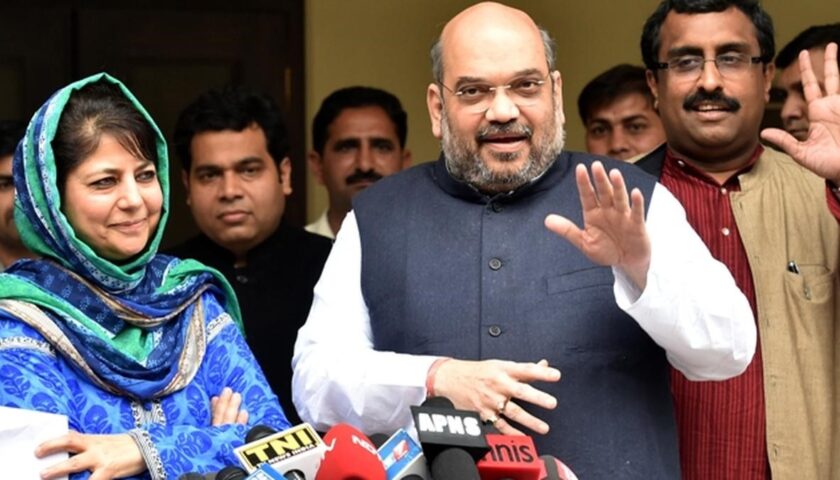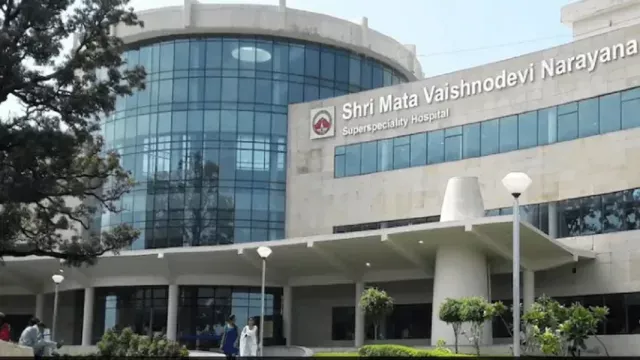Centre Plans Major Agriculture Interventions in Kashmir: Dairy, Fisheries, and Gene-Edited Sheep Drive Rural Revival
By: Javid Amin | Srinagar | 03 July 2025
A Rural Revival in Motion
When people think of Kashmir, they often imagine serene valleys, snow-capped peaks, and a centuries-old tradition of horticulture. But beyond the postcard image lies a reality of economic underdevelopment in rural belts—especially in agriculture, which, despite employing over 70% of the region’s workforce, remains grossly undercapitalized and infrastructure-poor.
Now, a sweeping change is on the horizon.
Union Minister Rajiv Ranjan Singh, during his recent visit to Kashmir, announced that the Centre is actively planning major interventions in Jammu and Kashmir’s agriculture sector. The aim? To restructure, modernize, and unlock the immense untapped potential of Kashmir’s dairy, fisheries, and livestock economy by empowering farmers, especially those from small and marginal backgrounds.
This isn’t just about farming—it’s a transformational agenda touching every layer of rural society.
A Strategic Shift: Vision 2030 for Agriculture in Kashmir
Under the Centre’s broader Vision 2030 framework, Jammu & Kashmir is poised to become a model state for sustainable agriculture, cooperative-based farming, and rural innovation. This strategic shift is more than just policy; it’s about reimagining rural Kashmir as a modern, productive, and inclusive economy.
Core Pillars of Vision 2030 Agriculture Plan for J&K:
-
Sustainable dairy and fisheries development
-
Promotion of rural agri-cooperatives
-
Innovation in animal genetics and biotechnology
-
Farm-to-market infrastructure
-
Integration of women and tribal farmers into the mainstream economy
-
Export-focused value addition of niche products
These pillars are aligned with the government’s twin goals of:
-
Doubling farmers’ income
-
Positioning Kashmir as a unique agro-export hub
The Dairy Revolution: Empowering Marginal Farmers
Of all the sectors under focus, dairy development holds the strongest promise. According to government data, J&K produces over 70 lakh liters of milk per day, but much of it is lost due to poor processing and cold chain facilities.
Centre’s Key Dairy Interventions:
1. Formation of Milk Cooperatives
-
Focus on organizing marginal dairy farmers, especially in hilly and tribal belts, into cooperatives.
-
Support from National Dairy Development Board (NDDB) to train and handhold farmers.
-
Panchayat-level dairy committees to be formed for local-level management.
2. Retail Dairy Outlets in Every District
-
These outlets will serve as both sales points and cold storage centers.
-
Operated under self-help groups and farmer cooperatives.
3. Financial Inclusion
-
Farmers to be linked with Kisan Credit Cards (KCC) and Dairy Infrastructure Development Funds (DIDF).
-
Soft loans and subsidies for buying improved breeds, veterinary support, and feeding systems.
4. Breed Improvement Programs
-
SKUAST-K and NDDB to introduce high-yielding cross-breeds and genetic enhancement programs.
-
Focus on developing local breeds adapted to climate stress and terrain challenges.
Case Study: How Pulwama’s Women Are Leading the Milk Economy
In Pulwama, a group of 45 women formed a cooperative in 2023 with help from the Rural Livelihood Mission. With just 30 cows, they now process and sell pasteurized milk under their own brand, “Kashmir Cream”, and supply directly to Srinagar markets. Their monthly income has tripled in a year.
Making Waves: The Push for Fisheries & Trout Export
Kashmir’s pristine streams and cool climate make it an ideal region for high-value fish farming, especially trout. Yet, the sector remains mostly informal and small-scale.
Union Minister Rajiv Ranjan Singh emphasized the Centre’s support through the National Fisheries Development Board (NFDB) to scale operations and formalize the fish economy in Kashmir.
Key Objectives in Fisheries Sector:
1. Trout Value Chain Development
-
Establishment of trout hatcheries, feed production units, and ice storage facilities.
-
Creation of brand identity for “Kashmir Trout” and export certification.
2. Reservoir & Coldwater Fisheries Expansion
-
Convert unused lakes and water reservoirs into productive fish farms.
-
Promotion of snow-fed stream-based aquaculture in Ganderbal, Bandipora, and Kupwara.
3. Skill Development & Women Inclusion
-
Launch of training programs for youth and “Matsya Shakti Groups” for women.
-
Mobile training labs and veterinary support in remote areas.
Biotechnology & Livestock Innovation at SKUAST-K: India’s First Gene-Edited Sheep
One of the most exciting developments is the creation of India’s first gene-edited sheep at Sher-e-Kashmir University of Agricultural Sciences and Technology – Kashmir (SKUAST-K).
What It Means:
-
Gene editing has enabled the development of disease-resistant sheep with higher wool yield.
-
These sheep are better adapted to cold, mountainous terrain and can be a game-changer for Bakarwal tribes and hill farmers.
Why It Matters:
-
Marks Kashmir’s entry into the biotech and precision-livestock farming arena.
-
Opens doors to partnerships with global biotech firms and advanced veterinary science institutes.
-
Establishes SKUAST-K as a national innovation leader, attracting funding, talent, and global attention.
Rural Infrastructure: Building the Farm-to-Market Ecosystem
No agricultural reform can succeed without physical infrastructure.
Centre’s Key Rural Infrastructure Goals:
-
🌾 Cold chains in every block to prevent post-harvest losses in milk and fish.
-
🛣️ All-weather farm roads under PMGSY 2.0 for better rural market access.
-
🏪 Village Agri-Marts to directly connect farmers to customers, bypassing middlemen.
-
⚡ Rural Electrification for automated dairy and fish processing units.
-
🧪 District-level soil testing labs and mobile veterinary clinics.
Leveraging Public-Private Partnerships (PPP):
-
Startups and private investors to be offered land leases, subsidies, and export incentives.
-
Kashmir to be promoted as a “Rural Investment Zone”.
Empowering Women & Tribal Farmers: The Backbone of Rural Kashmir
Kashmir’s women and tribal communities are traditionally the unsung heroes of agriculture. The Centre’s new approach prioritizes these communities through:
Key Initiatives:
-
Inclusion of women in Lakhpati Didi Yojana, with additional incentives for dairy and fisheries cooperatives.
-
Targeted support for tribal pastoralists and Bakarwal communities under the Tribal Sub Plan.
-
Customization of tools and credit systems for landless and nomadic farmers.
Economic Impact: More Than Just Milk and Fish
Agriculture, livestock, and allied sectors contribute over 50% to J&K’s State Gross Domestic Product (SGDP). This means every improvement ripples across the economy.
Potential Impact in Numbers:
-
1.5–2 lakh new jobs expected in dairy and fisheries by 2030.
-
Over ₹5,000 crore increase in rural income through value addition and exports.
-
Kashmir’s agricultural exports could grow 5x in trout, apples, dairy, and organic produce.
Monitoring & Transparency
To ensure accountability and speed of implementation, the Centre has put the following systems in place:
-
Dashboard-based monitoring of cooperative formation and production metrics.
-
Kisan apps for scheme application, subsidy tracking, and complaint resolution.
-
Third-party audits by NABARD and Agriculture Ministry.
-
Regular Jan Samvad (people’s dialogues) at panchayat levels.
Challenges on the Horizon
While the roadmap is promising, execution won’t be without hurdles:
-
Harsh climate and logistical issues in snow-prone areas.
-
Land ownership disputes, especially in tribal and forest areas.
-
Need for behavioral change among traditional farmers to adopt tech and collective practices.
What Experts and Farmers Are Saying
“This is not just about cows and fish—it’s about hope.” — Dr. Farooq Lone, Agri Economist
“With cold chains and retail support, we can finally scale our dairy brand to other states.” — Rabia, Self-help Group Leader, Anantnag
“This is the first time the government is listening to the real farmers, not just landowners.” — Mehraj Bakarwal, Tribal Youth from Kulgam
Bottom-Line: The Seeds of Transformation Are Being Sown
What the Centre is proposing for agriculture in Kashmir is nothing short of a rural revolution. Through strategic, tech-enabled, community-driven interventions, Jammu & Kashmir could emerge as a model of sustainable farming, rural enterprise, and export-driven agriculture by the end of this decade.
But the success of these interventions depends not just on policies—but on participation, transparency, and timely delivery. The region, battered by decades of conflict and neglect, deserves a future rooted in economic dignity, rural stability, and collective prosperity.
The seeds have been sown. It’s time to reap a better tomorrow.




